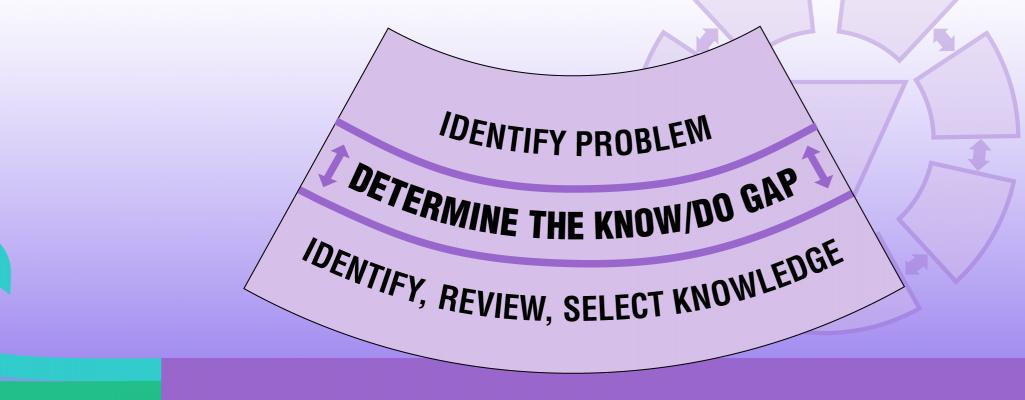
For this section, you and your change team will identify, review and select knowledge tool(s) to help you address the knowledge-to-practice gap.
Knowledge tools (e.g., BPGs) are intended to support effective implementation for your knowledge-to-practice gap. Not all knowledge tools are equally effective. Ideal tool characteristics include an explicit statement of objectives, a description of who would use the tool, and instructions on how to use it, among other desirable features.
These are examples of knowledge tools:
- Best practice guidelines (BPG)/clinical practice guidelines
- Quality indicators
- Decision-making algorithms
- Systematic reviews
Here is a list of desirable features of a knowledge tool:
- Tool objectives are stated.
- Target users are named.
- Instructions on tool use are provided.
- Methods used to develop the tool are described.
- The tool is based on a comprehensive search for content.
- The evidence upon which tool content is based is described.
- Sources of evidence are cited.
- The setting in which the tool was developed and in which the tool will be used is described.
- Those who intended to use the tool were involved in tool development.
- Methods used to evaluate the tool are described.
- The tool was pilot-tested with users.
- User feedback about tool use and its effects (e.g., on practice) is prospectively collected.
SOURCE: Gagliardi et al., 2014.
Unfortunately, not all knowledge tools reflect best practices. For example, thousands of practice guidelines can be found online that address various clinical issues. Some of these guidelines are created using a rigorous approach to selecting and quality appraising the research, whereas others may be biased or unclear. Examples of organizations that use rigorous methods to develop guidelines include AGREE Enterprise, Guidelines International Network, National Institute for Health and Care Excellence, Registered Nurses’ Association of Ontario and Scottish Intercollegiate Guidelines Network.
RNAO’s guidelines are created using the highest international standards for guideline development. Learn more about the guideline development methodology
Financial, intellectual and other interests might lead knowledge tool developers to omit or downplay a health risk, overstate outcome effectiveness or provide misleading statistics. Trustworthy knowledge tools should include references for the evidence presented, and disclose conflicts of interest (Moore et al., 2017).
Remember: You and your colleagues must be able to trust the knowledge tool, believe that it adequately addresses the problem or gap and is suitable for your setting.
How do you and your change team select the right knowledge tool to address a problem/issue?
- Use a systematic process.
- Use a process for selecting the knowledge tool that helps you determine the quality and fit for your setting.
- In cases where there is more than one knowledge tool to be selected, be aware that some team members may have preferences based on past experiences. Beyond the criteria of quality and contextual “fit”, consensus must be reached by the group regarding the final selection of the knowledge tool.
- Work as a team.
- Gather your team. Identify individuals who can help select the knowledge tool. This should include people who will be using the tool directly and may include people who understand research methods.
- Engage leaders. Engage formal and informal leaders, such as representatives from senior management teams, unit managers, local opinion leaders, quality/risk management and frontline staff.
- Listen to everyone’s concerns. Actively seek individuals who have initial doubts or concerns about the problem you want to address in your setting. Attentively listen, and if possible, offer solutions that address their questions and doubts. Value their input and invite them to be part of this team.
- Ensure that everyone has a voice. Encourage members of the team to voice their perspectives regarding the identification of the problem and the selection of knowledge. To work cohesively, ensure adequate time is allocated to discuss all concerns and claims regarding the innovation raised by those in favour or opposed to the proposed change.
Remember: It is important that everyone agrees and can defend the choice of knowledge tool
(Bajnok et al., 2018b).

Accelerate Your Success: The Social Movement Action Framework’s ‘intrinsic motivation’ element can help you further engage others who see the current problem. By using sources of intrinsic motivation, individuals are more likely to engage as change agents and/or members of a change team because they personally value the shared concern and want to address it.
